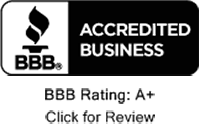Wasps & Hornets
Wasps are generally considered to be pests because of their ability to sting. They can become a problem from the middle of summer to late fall when they may disrupt many outdoor activities. Wasps live in colonies that are ruled a queen and maintained by workers. 
Appearance
Wasps have a slender body with a narrow waist, slender, cylindrical legs, and appear smoothed-skinned and shiny. Yellowjackets, bald-faced hornets, and paper wasps are the most common types of wasps encountered by people.
Food Preferences 
Wasps are predators, feeding insects and other arthropods to their young, which develop in the nest. During late summer and fall, as queens stop laying eggs and their nests decline, wasps change their food gathering priorities and are more interested in collecting sweets and other carbohydrates. Some wasps may become aggressive scavengers around human food and may be common around outdoor activities where food or drinks are served.
Nesting Sites
Yellowjackets, bald-faced hornets, and paper wasps make nests from a papery pulp comprised of chewed-up wood fibers mixed with saliva. Yellowjacket and bald-faced hornet nests consist of a series of rounded combs stacked in tiers. These combs are covered by an envelope consisting of several layers of pulp. Paper wasps construct only one comb without any protective envelope. These insects are sometimes known as umbrella wasps because of the shape of their nest.
Life Cycle
Wasps have annual colonies that last for only one year. The colony dies in the fall with only the newly produced queens surviving the winter. The new queens leave their nests during late summer and mate with males. The queens then seek out over-wintering sites, such as under loose bark, in rotted logs, under siding or tile, and in other small crevices and spaces, where they become dormant. These queens become active the following spring when temperatures warm. They search for favorable nesting sites to construct new nests. They do not reuse old nests.
Wasp Stings
Wasps sting to defend themselves or their colony. Stinging involves the injection of protein venom that causes pain and other reactions.
Wasps can sting more than once because they are able to pull out their stinger without injury to themselves. If you are stung by a wasp, the stinger is not left in your skin.
An allergic reaction may include hives or rash, swelling away from the sting site, headache, minor respiratory symptoms, and stomach upset. These allergic reactions are not life-threatening and can be readily treated with an antihistamine.
Control of Nests 
The best time of the year to control wasps is in June after the queen has established her colony and while the colony is still small. However, because nests are small, they are also harder to find. The best time of the day to control wasp nests is at night, when they are less active. At temperatures below 50° F, wasps have difficulty flying. Never seal a wasp nest until you are sure there are no surviving wasps inside. If a nest is not discovered until fall, control may be unnecessary, as imminent freezing temperatures will kill the colony.
The first step in wasp control is to correctly identify the insect and locate its nesting site. Most situations can be solved with one application. Exposed nests that have been treated should be left for at least 24 hours before removing them. Access holes should be sealed a couple of days after all activity has ceased. It is also possible to prevent wasps from nesting by treating likely harborage areas with a residual insecticide prior to their nesting.
Getting rid of these pests can sometimes be fearful, especially if you are allergic. A large nest may mean an attack and stings on you or other people in the area. Hiring a professional pest control can mean safe and efficient handling of the wasps and bees. Pest control experts are trained in handling these stinging pests and we can rid your home or business quickly using nontoxic organic products.



